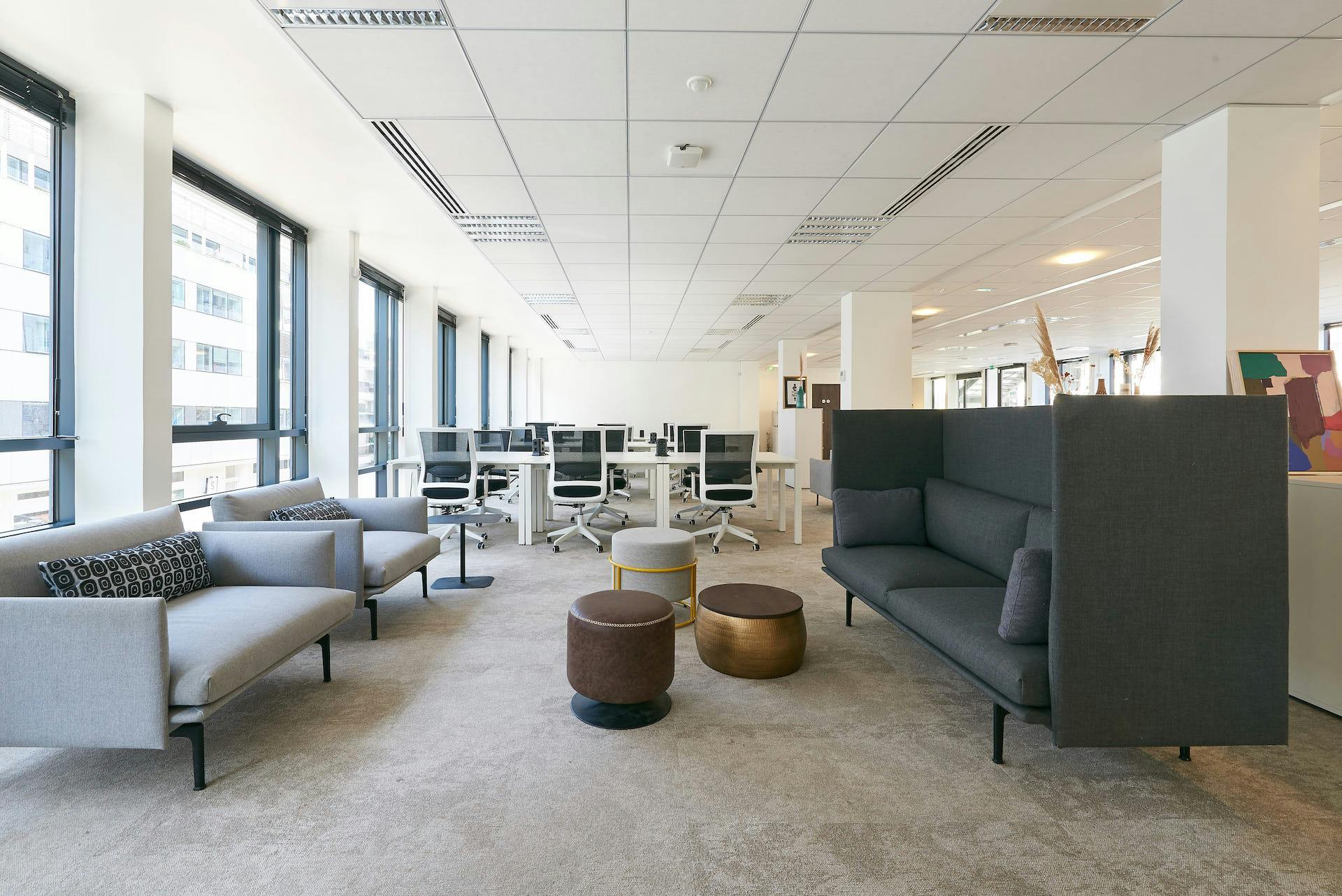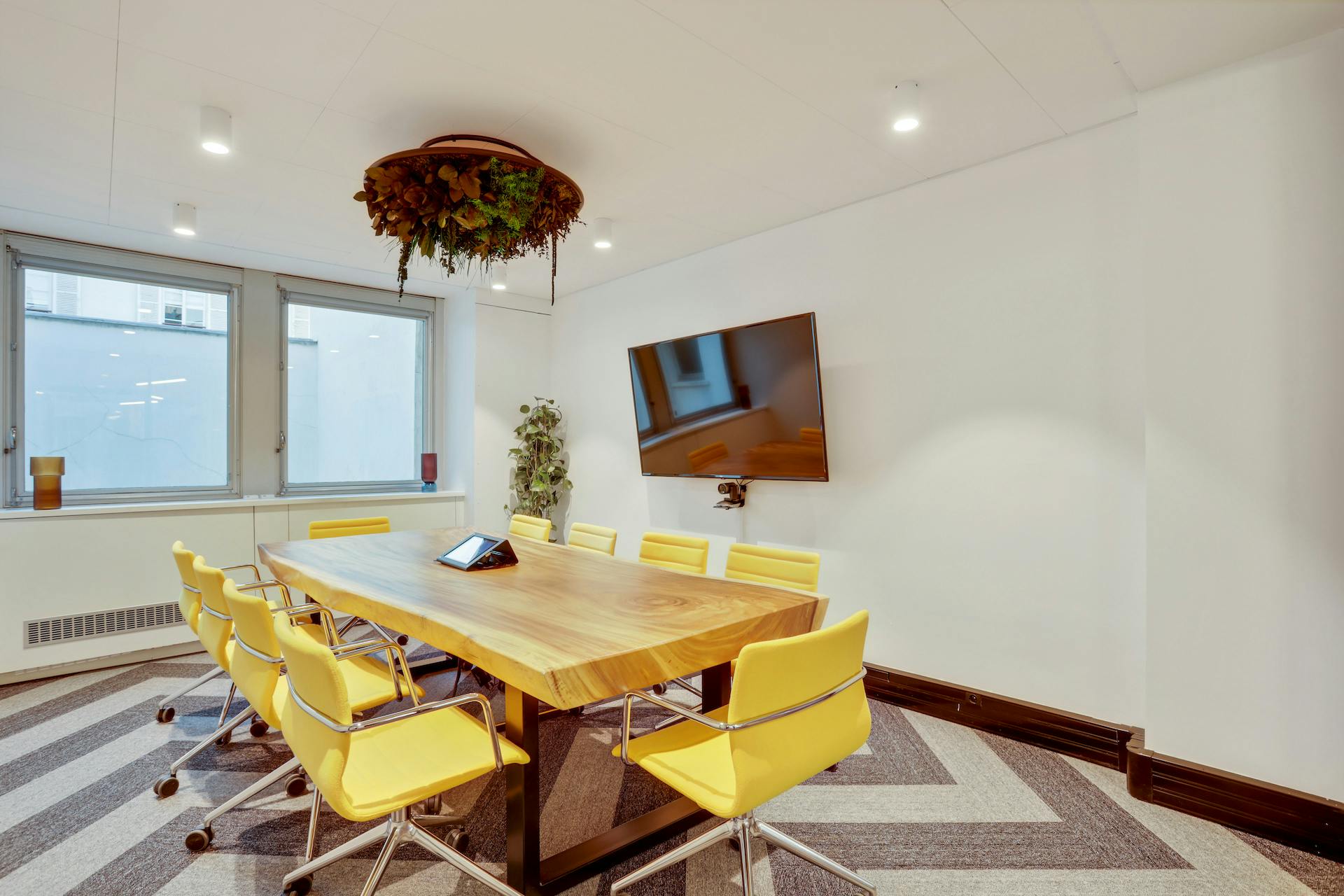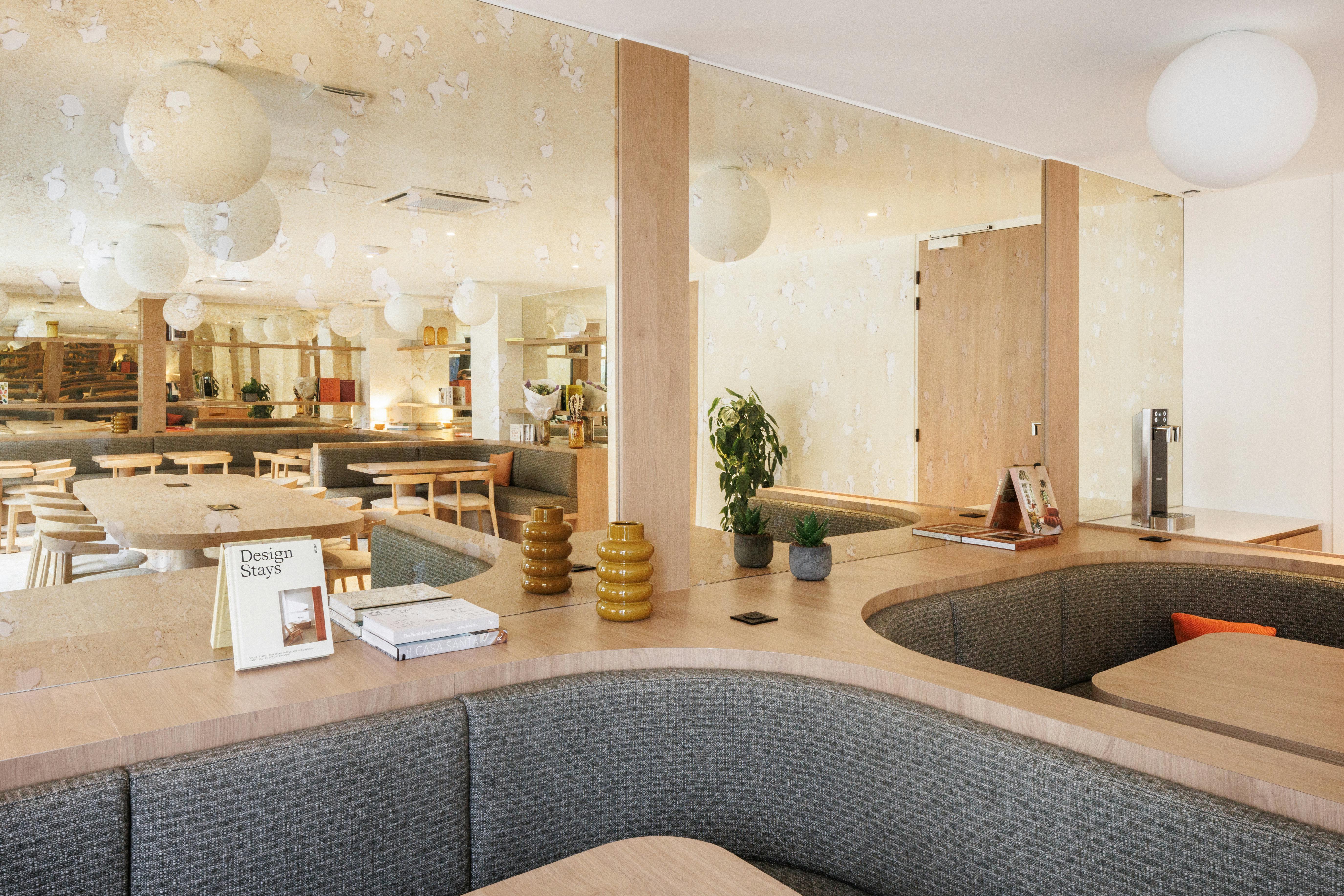

How to optimize your workplace effectiveness?
Our professional world is marked by a frantic pace and increasing demands where the pursuit of workplace efficiency has become a major concern for many individuals. Faced with this reality, it is imperative to adopt concrete and applicable strategies aimed at optimizing our productivity. However, improving efficiency is not limited solely to time and task management.
In this perspective, our article explores a range of strategies to help you enhance workplace efficiency. It emphasizes organizational practices, time management, as well as the development of communication skills, with the aim of working efficiently and fully realizing your professional potential.
What is professional efficiency?
Professional efficiency is characterized by an individual's ability to perform tasks optimally within their work environment. This involves being able to produce quality results, within set deadlines, and using available resources effectively. An efficient person knows how to organize their work, prioritize activities, make relevant decisions, and manage their time effectively.
It is worth noting that the relationship between efficiency and productivity is closely linked. Indeed, an efficient person can maximize productivity by delivering high-quality work within a reasonable timeframe.
Why aim for better efficiency?
Aiming for better efficiency offers numerous benefits both personally and professionally. On a personal level, being efficient provides a sense of accomplishment and satisfaction by completing tasks effectively and efficiently. It also helps reduce work-related stress by avoiding delays and work overload.
On a professional level, increased efficiency can have a significant impact on achieving company goals. By being more efficient in executing tasks, an individual contributes to improving company performance, achieving set objectives, and fostering organizational growth.
Strategies to improve efficiency
Priority management and time organization
Priority management and time organization play a crucial role in optimizing our efficiency at work. By identifying priority tasks and allocating our time wisely, we can truly increase our productivity. The Pareto Principle perfectly illustrates this principle by revealing that only about 20% of our efforts are responsible for 80% of the results achieved. This highlights the importance of focusing our energies on the most important tasks. It is worth noting that up to 40% of our working time can be wasted on tasks that do not contribute significantly to our priority objectives. This is where certain tools can greatly help us better organize our work and stay focused on what truly matters.
Eisenhower method and priority matrix
The Eisenhower method, developed by President Dwight D. Eisenhower, categorizes tasks into four categories: urgent and important, important but not urgent, urgent but not important, and neither urgent nor important. By using this method, you can prioritize your tasks and focus your attention on those with the most impact. The priority matrix, often represented as a four-quadrant table, provides a clear visualization of tasks to be accomplished.
Pomodoro technique
The Pomodoro method is a time management technique that breaks work into short time intervals. Typically, it starts with 25-minute sessions followed by short breaks. This approach aims to promote concentration by limiting distractions and maintaining a regular work rhythm. To implement this method, simply divide tasks into 25-minute sessions, called "pomodoros," and alternate with 5-minute breaks between each session.
Improving the work environment
A well-organized work environment can greatly contribute to employees' efficiency and well-being. Small changes, such as desk organization, improved lighting, and the addition of plants, can have a significant impact on productivity. Furthermore, ensuring that the workspace is clean, peaceful, and ergonomic can promote concentration and limit distractions.
Minimizing interruptions
Interruptions are common in the workplace and can lead to time loss and disrupt workflow. To mitigate their impact, we recommend implementing a few small strategies that can make all the difference.
- Planning work hours involves defining dedicated time slots for specific tasks during which we commit not to be interrupted.
- Clear communication of availability involves letting our colleagues know when we are available for interactions and when we prefer not to be disturbed.
- Using visual signals, such as "Do Not Disturb" signs or headphones, can help indicate to others that we are focused and do not wish to be interrupted.
Adjusting physical space
Optimizing physical workspace can also improve efficiency. As mentioned earlier, this includes maintaining a well-organized workspace, choosing ergonomic furniture to promote comfort and productivity. It also involves setting up workspaces where collaborators have the option to isolate themselves or make phone calls.
Adoption of tools and technologies
The use of modern tools and technologies simplifies task management and online collaboration. These means allow for better organization of activities, fostering exchanges and cooperation among team members.
Task Management Software
- Trello: A visual and intuitive task management platform. Users can organize their tasks as cards, move them between different lists, and assign them to team members. This tool offers great flexibility and easily adapts to various workflows.
- Asana: A comprehensive project management tool that allows planning, tracking, and organizing tasks and projects collaboratively. Asana's features include setting deadlines, assigning responsibilities, and visualizing progress in real-time.
- Todoist: A simple yet powerful task management application designed to help users stay organized and productive. With this tool, you can easily create, schedule, and prioritize tasks, as well as synchronize them across different devices.
Online Collaboration Solutions
Online collaboration platforms such as Teams, Slack, or Google Workspace offer many advantages for teams working remotely or geographically distributed.
They promote smooth communication and enable instant exchanges via live chats, audio, and video calls. As a result, coordination is simplified, and issues are resolved quickly. Additionally, file-sharing tools like Google Drive, Google Docs, Google Sheets, etc., offer advanced features for collaborating on documents, spreadsheets, and other files.
Feel free to explore and choose a platform that fits your team's specific needs in terms of features, scalability, and data security.
Practices for an effective work routine
Concentration and focus techniques
Maintaining an effective work routine is essential for optimizing productivity and achieving professional goals. Here are some daily practices that can help maintain a well-structured routine:
- Advance Planning: Taking a few minutes each morning to plan your day can help establish clear goals and prioritize tasks to be accomplished.
- Creating Rituals: Establishing morning and evening rituals can help get into a work-friendly mindset and detach once the day is over. For example, taking a few minutes to meditate or write down daily goals can help focus before starting work, while a closing routine, such as tidying up your desk or taking a short walk, can help transition between work and leisure time.
- Avoiding Distractions: Achieving a high level of productivity and producing quality work can be challenging when concentration is lacking. Identify and eliminate potential distractions, such as phone notifications or non-urgent emails. If you want to go even further, there are even distraction-blocking applications that can help maintain focus on important tasks.
- Effective Time Management: Using time management techniques such as the Pomodoro method can enable more productive work by alternating intense work periods with regular breaks.
Value of rest time
Importance of breaks
We strongly recommend taking regular breaks to maintain high efficiency and prevent professional burnout. Taking short breaks every hour allows you to recharge your mental and physical batteries. It helps maintain a high level of productivity by allowing you to relax, stretch your legs, and refocus before resuming your activities. These regular breaks can also be an opportunity to socialize with colleagues in the break room!
Stress management and detachment
We understand that work can be stressful in certain situations. Therefore, it is important to learn how to manage and detach from it.
To do this, consider practicing relaxation techniques. Taking a few moments to relax and refocus can help reduce stress and increase concentration. This can be done by finding a quiet place, closing your eyes, focusing on breathing, observing physical sensations in the body, and exploring thoughts and emotions without judgment.
Furthermore, set clear boundaries between professional and personal life. This involves determining specific times when you are exclusively devoted to work and other times dedicated to your personal life, such as family, hobbies, or rest. These boundaries help maintain a healthy balance between the different spheres of life and help prevent burnout by preventing work from spilling over into other aspects of existence.
Tips for productive meetings
Meeting Planning and Preparation
Meetings can be valuable means of fostering collaboration and making important decisions, but they can also quickly become time-consuming and ineffective if not well planned and executed.
Here are some tips to avoid this situation:
- Set a clear and achievable objective: This will guide the agenda and ensure that the meeting remains focused on essential points.
- Develop a detailed agenda: With the points to be discussed and an estimate of the time required for each subject. This will help keep the meeting on track and respect the allotted time.
- Invite only relevant participants: Restrict the list of participants to those directly involved in the topics to be addressed. This will help avoid time wastage and unnecessary interventions.
Reduce Duration and Increase Engagement
- Limit the duration: Set a maximum duration for the meeting and stick to it rigorously. Shorter meetings encourage participants to stay focused and address topics more effectively.
- Encourage interaction: Promote active participation by asking questions, seeking feedback, and encouraging open discussions.
Develop active listening: Practice active listening by giving full attention to participants' contributions. This promotes mutual understanding, reduces the risk of misunderstandings, and optimizes discussion time by avoiding unnecessary repetitions.

Cultivate self-assessment and continuous improvement
Importance of personal feedback
The importance of personal feedback cannot be underestimated when it comes to improving efficiency at work. It allows for stepping back, identifying strengths and weaknesses, and setting improvement goals. To collect and use feedback constructively, several steps should be considered:
- Request feedback regularly: Regularly ask colleagues, supervisors, or clients for feedback on your work and professional behavior.
- Actively listen: Be open and receptive to feedback, even if it's critical, and seek to understand others' perspectives.
- Analyze feedback: Taking the time to analyze feedback received is essential for identifying areas where improvements can be made and implementing corrective actions.
Self-analysis and performance review
To conduct effective self-analysis and personal performance reviews, feel free to set clear objectives, such as defining SMART goals (Specific, Measurable, Achievable, Relevant, Time-bound) to guide self-assessment and performance review. For example, you can set a SMART goal such as "Increase my productivity rate by 10% by the end of the quarter by improving time management and reducing distractions." Additionally, keep a journal to record your achievements, challenges, and daily learning, which will help track your progress. Finally, use self-assessment tools, such as self-assessment questionnaires or skills grids, to objectively evaluate your skills and performance. For example, you can evaluate your communication skills based on predefined criteria such as message clarity, active listening ability, etc.
Strategies for continuous improvement
Acquiring new skills and adjusting existing ones are key elements of continuous improvement at work. Indeed, expanding one's skill set or strengthening existing skills can lead to better efficiency and increased performance.
Training and skill adjustment
Acquiring new skills can positively impact work. For example, learning a new language can open doors in international markets, while mastering new software can improve work process efficiency. Similarly, adjusting existing skills is necessary to adapt to technological changes, new market trends, or specific job requirements. This may involve taking additional training, participating in workshops or seminars, or self-learning through online resources.
What to remember from work efficiency optimization?
Improving work efficiency requires discipline, perseverance, and a constant desire for progress, but it is entirely achievable to aspire to high professional performance while maintaining a healthy balance between work and personal life.
In summary, optimizing work efficiency relies on several essential pillars. First and foremost, establishing clear goals is crucial. By defining goals, each individual can direct their efforts towards tangible and measurable results. This work methodology helps stay on track and maximize the impact of actions. At the same time, maintaining a culture of continuous improvement is fundamental. By adopting a proactive approach, not only sustainable efficiency is promoted, but also constant personal and professional growth.

Contact Us
We find your Perfect fit!

